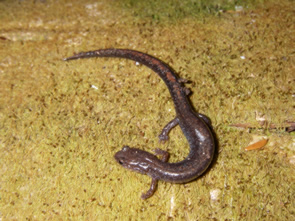
Plethodon serratus
Photo by Kristen Cecala
Description: There are two distinct color morphs of the southern red-backed salamander. The striped morph has a dark grey or brown base color with an orange or red stripe stretching from the head to the end of the tail. The unstriped morph is brown on the back and may have a variable amount of red spotting on the back and sides. The sides of both morphs are brown with a variable amount of white spotting. The underside of these salamanders has salt-and-pepper flecking and sometimes small amounts of red pigment.
Habitat/Range: These salamanders are found in extreme southwestern North Carolina. They are most often found in forested areas where the substrate is at least moderately moist. These salamanders may take cover under rocks, logs, and leaf litter on the forest floor. During the summer, these salamanders become difficult to find as they become inactive or move to subsurface retreats.
Diet: Southern red-backed salamanders consume a wide variety of invertebrates.
Reproduction: Nests of southern red-backed salamanders have never been found in the wild. It is likely that they lay their eggs in underground burrows and guard their eggs until hatching like many closely-related species. Hatchlings do not go through an aquatic larval stage. Instead, when young salamanders emerge from their eggs they look like miniature adults.
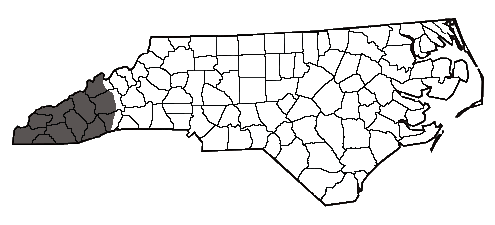
The shaded region represents the range of the southern red-backed salamander in North Carolina.
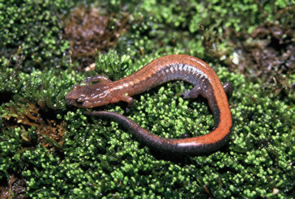
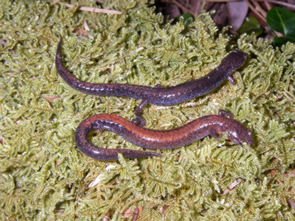
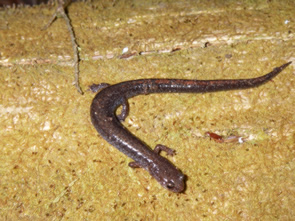
The "lead-backed" and "red-backed" phases of the Southern red-backed salamander.
Photo
by Kristen Cecala
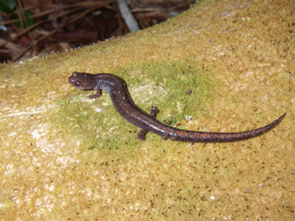
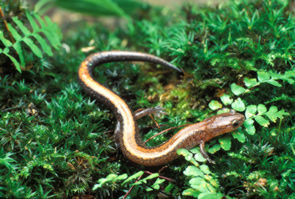
Photo by Kristen Cecala
Photo by D Dennis
